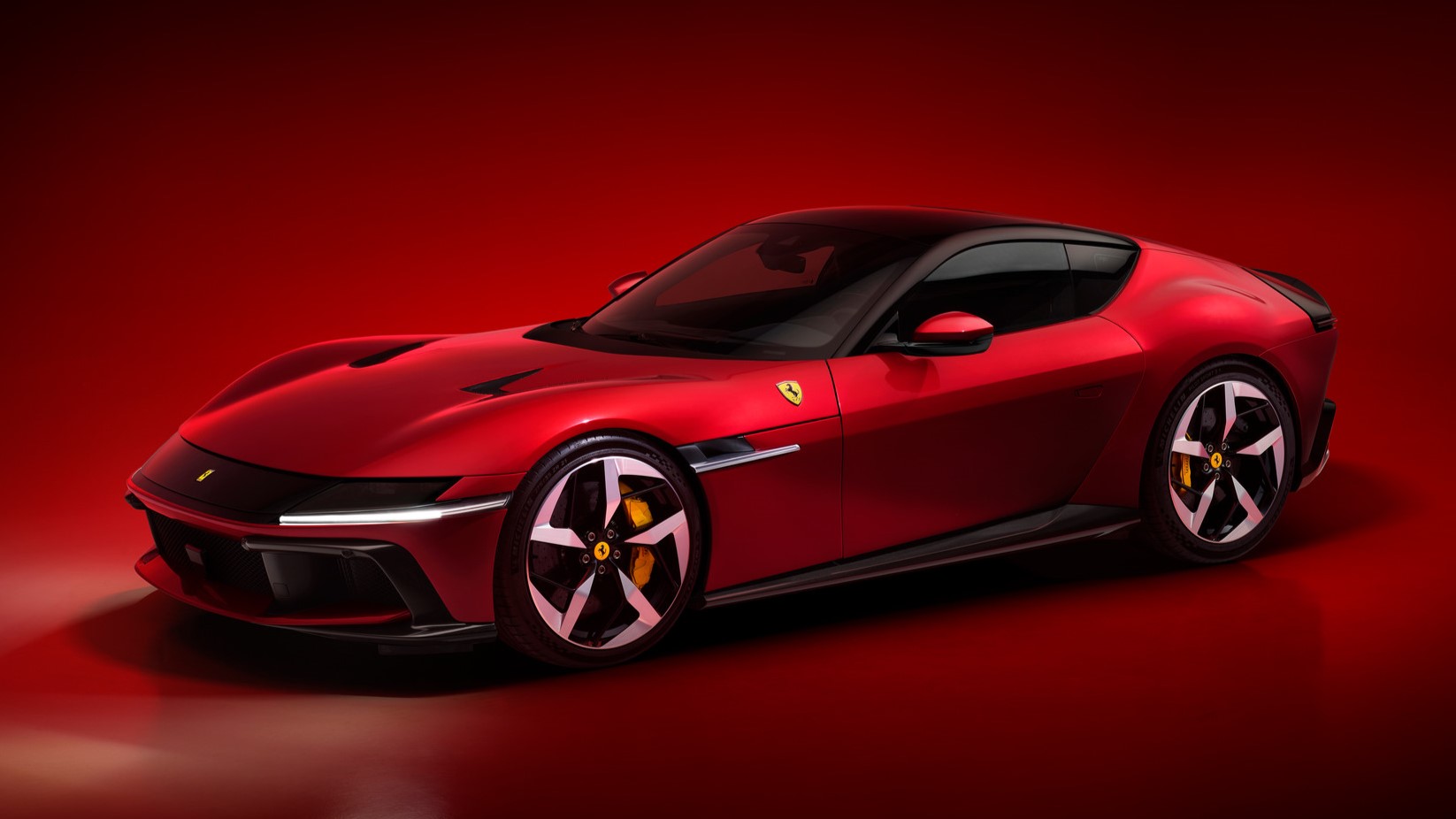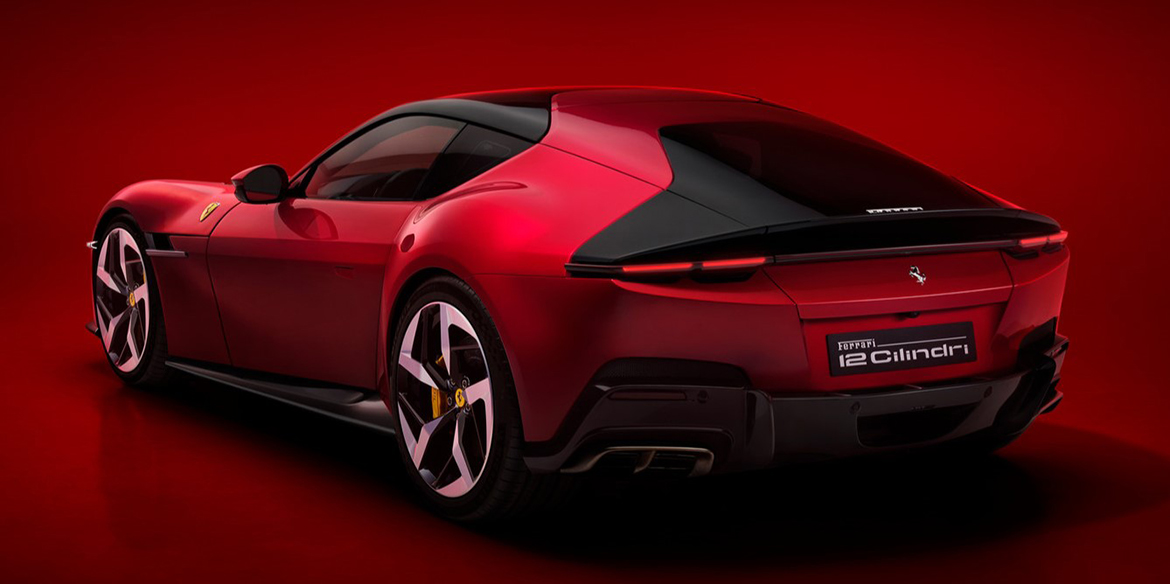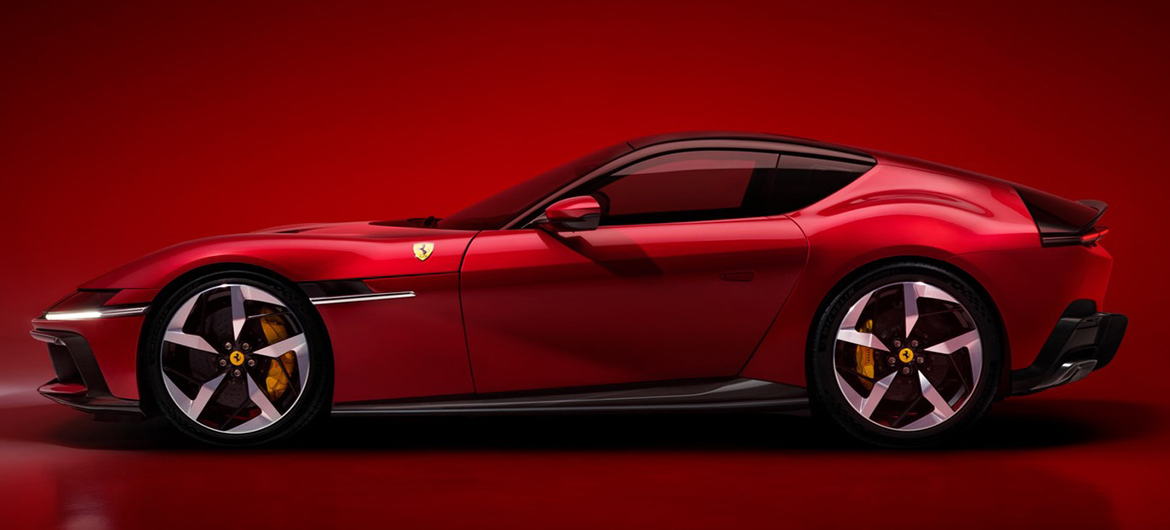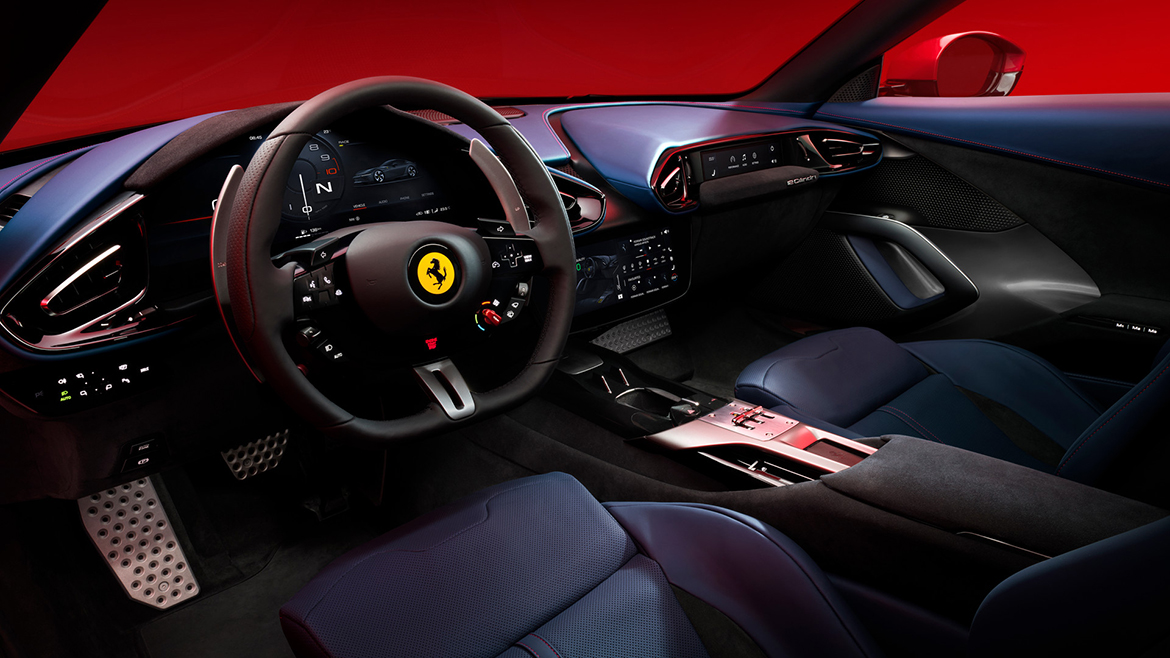Present, past and future. The Ferrari 12Cilindri has all the elements of the time within it: it celebrates the V12 engine, the Cavallino’s power unit par excellence, indulges in a few references to models of the past and anticipates the ideas and shapes of tomorrow’s Ferraris. The Ferrari 12Cilindri is inspired by the Ferrari Gran Turismos of the 1950s and 1960s and fully embodies the mission of the front-engined, two-seater V12 Ferrari in a combination of elegance, versatility and performance. ‘”When we design a new model we always start from a dream. For the 12Cilindri, there was a strong temptation to create classic lines, but we said no: this car inaugurates a new stylistic season for Ferrari, it radically changes its codes,” says Flavio Manzoni, Ferrari’s Chief Design Officer since 2010 and creator, together with his Centro Stile team, of more than sixty Rosse.
“One of the salient features of the 12Cilindri is the line that runs along the entire volume of the car, which was conceived as a fuselage inspired by aeronautical and futuristic, almost sci-fi principles. Nothing is left to chance, every detail is taken care of to a maniacal level and the muscles are treated rigorously,” Manzoni continues. Two elements above all define the front end: the black fascia containing the LED headlights, inspired by the legendary Daytona, and the bonnet: “The latter in particular has allowed us to have a unique cleanliness of lines, but it was a big battle for the style centre with the engineers because it is heavier and more difficult to make than a traditional bonnet. The two-seater supercar’s sinuous and decisive forms have abandoned human features: ‘We have evolved the concept of grilles that look like mouths and headlights that look like eyes, the car has such a strong presence that it can be considered in its essence without stylistic references to other worlds”.
The 12Cilindri project started four years ago together with the Spider version, an even more exciting open-top 12Cilindri. “With the roof closed, the two cars show little difference, they are both very elegant,” says Andrea Militello, Head of GT Cars Exterior Design. “On the Ferrari 12Cilindri, the mudguards are treated with great geometric precision: the lines are always the result of intersections of volumes and there is a more functional approach to form that generates an innovative effect”. The same applies to the architecture of the rear: here too, it is rigour that governs the styling. That of the Ferrari 12Cilindri is a pure transom, obtained by subtraction, reducing the volume of the whole. In coherence with the front, the lights are set inside a blade that runs through the whole volume, and from it emerges perhaps the 12Cilindri’s most characteristic theme.
The interior follows a less break with the past than the exterior and has been designed following a three-tier layout. ‘The first, defined by the upper part of the dashboard, grafts onto the saddled area of the door panels. Then there is the central area and finally the tubs and seats,” explains Fabio Massari, Head Of GT Cars Interior Design. There are just as many displays in the cabin: one in front of the driver (15.6 inches), one in the middle (10.5 inches) and one in front of the passenger (8.8 inches). To keep up with the times, the interior makes extensive use of sustainable materials, including Alcantara made of 65 per cent recycled polyester. “With the 12Cilindri a new stylistic chapter opens for Ferrari that will bring a new design to all future models,” Manzoni concludes. Waiting for the electric Ferrari: see you next year.














